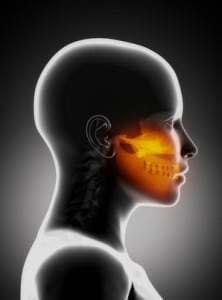
Whether you’re dealing with a sore, tender jaw, a stiff neck, eye strain, hearing problems, or chronic headaches, you need to take action and do something about your TMJ disorder before it gets the best of you.
You have options for TMJ treatment
Once you’ve been diagnosed with TMJ, your TMJ dentist will discuss your options with you to deal with jaw pain, neck pain, migraines, and any other symptoms that are plaguing you do to an imbalance in your jaw. Depending on your personal situation
could be the answer that you have been looking for.
Get your best TMJ treatment
- Orthotics may be the best route for you if there is a problem with the placement of your bite, or alignment of your jaw. A bite splint, also referred to as a tmj orthotic, separates the teeth in such a way that it allows the jaw muscle to relax and provide badly needed relief.
- If your problem is due to issues with your teeth, smile rejuvenation may be recommended. Dental crowns, bridges, and dental implants can fill gaps in your teeth and allow them to align properly, creating balance with a proper bite.
- NUCCA chiropractic treatment is advised when your TMJ disorder actually results from a misalignment of the delicate bones that form a link between the head and neck. Migraines and neck pain are common indicators that you are dealing with such a problem, which may result in jaw pain as well. You’ll be treated with a unique, gentle approach to provide you with the adjustments necessary to correct the problem.
Take the first step
The best thing you can do for yourself is to set up a consultation with a TMJ dentist as soon as possible. No one should have to live in discomfort or pain. With your dentist’s evaluation, skill, and experience, you can find yourself on the road to recovery. Once you’ve determined the source of your TMJ pain, you will be able to address it.
